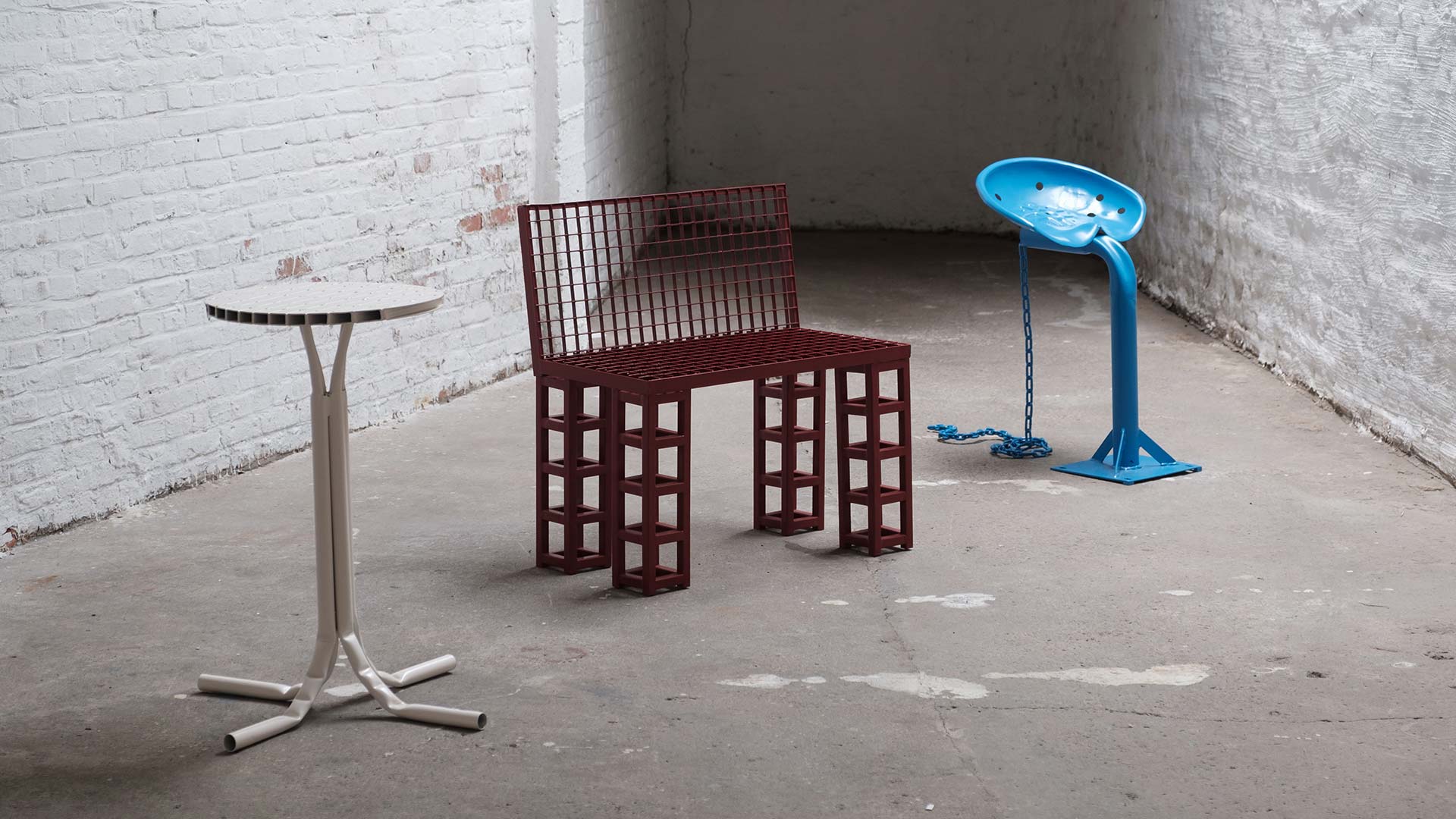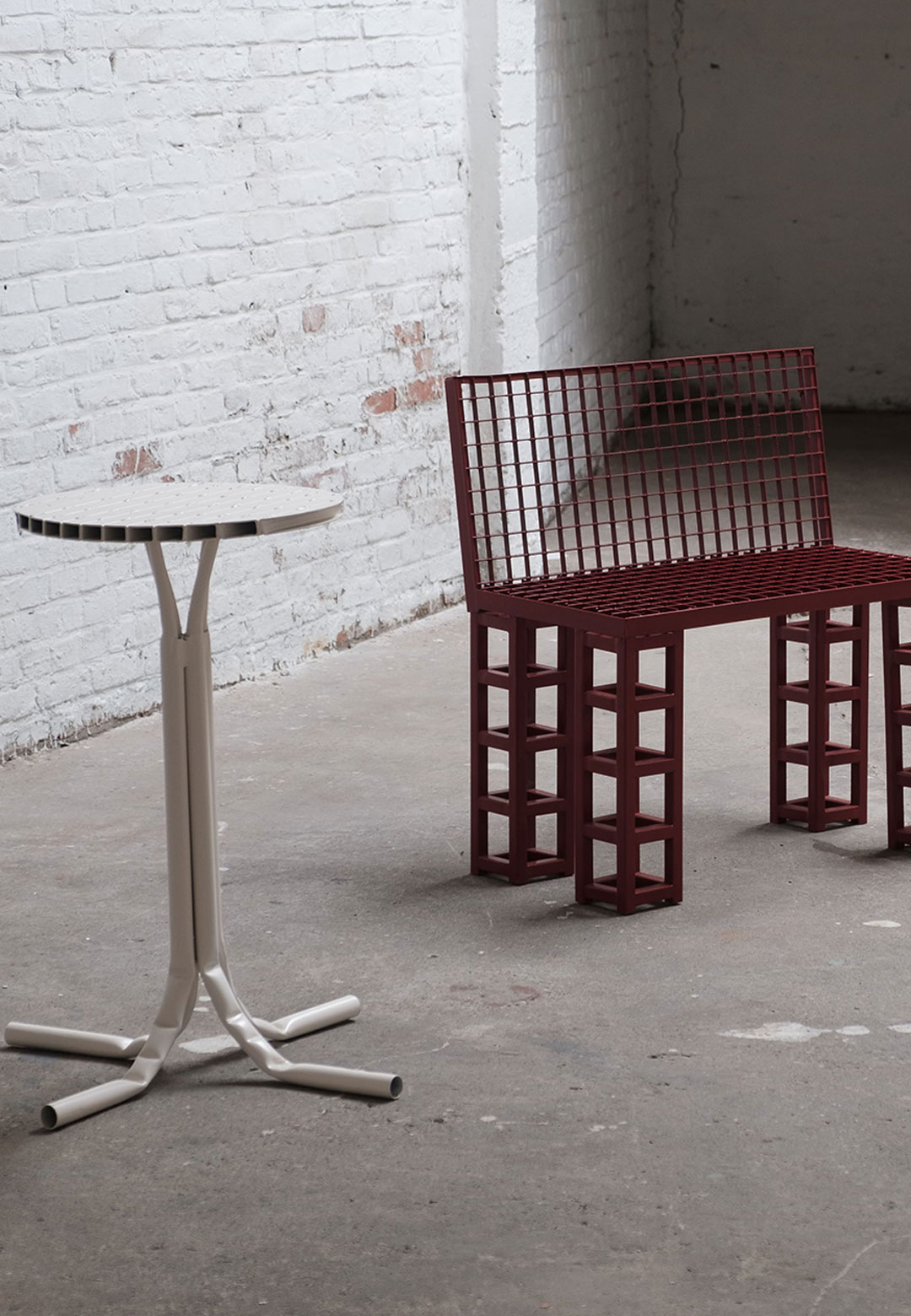Foraging through waste objects and material discards is an activity that preludes Canadian designer Lauren Goodman’s process of sculpting furniture. All her previous projects, from the Ironing Throne and Bottom of the Barrel to Fresh Catch and Providence Project, are guided by the action and intention of reducing waste by making use of that which has been docketed as useless. The sculptural furniture designer and maker, based in Montreal, Canada, begins each of her creative endeavours in specific locations with the corresponding waste discards outstanding in the region. Her most recent foray in furniture design is eponymously named the Eindhoven Project after the city where Goodman conducted the exploration for material waste.
“The Eindhoven Project is the third iteration of my experiments in place-based-design and is as a component of a larger body of work that uses local waste streams to create designed objects,” the product designer shares. Citing examples of previous projects which were conducted in Providence, Rhode Island and Monson, Maine, Goodman continues, “Each series relies on the use of local trash to uncover ways in which a place and its waste streams can influence the work. Through these projects, I seek to uncover alternatives to the dominant design systems characterised by extraction and mass production.”
Lauren Goodman is an educator, designer and artist. She is guided by the desire to create from what already exists. This also means that the processes she undertakes are consciously driven. They are considerate of the local environment and are developed in response to the neglect and apathy often projected by local communities towards their surroundings. Hence, she scavenges through discards, both small and large, to salvage bits and pieces of metal and plastic, which she then patches together to build tangible and functional objects. This process of building from what remains unseen to the layman is less extractive, hence countering a major malfeasance attributed to creative practices.
Referring to the idea that guides her, Goodman shares, “The idea of throwing something away is a fallacy. All we are really doing is removing whatever is unwanted from our immediate line of sight. Putting it somewhere else makes it someone else's problem. Through exemplifying the potential of trash as a material resource, I aim to draw attention to local waste streams and reframe the perspective that this is something we need to pretend isn’t there.” Goodman aims to not only utilise this realisation in her practice, but also find ways and means to relay this awareness forward, to fellow artists and designers, with the intent of establishing a balance between the user, the product, and the environment.
The Eindhoven Project is part of Goodman's ongoing experimental project, This Trash is Someone Else's Problem, which is an exploration in place-based design. This includes researching about local people, land, labour history, and indigenous stewardship, as well as working with paraphernalia obtained from the area. Delineating the potential of trash, the designer asks, “What if we treated discarded objects with gratitude as opposed to loathing? Could we start to see something else? With the right perspective, trash could be our most abundant raw material.”
For the Eindhoven Project, Goodman spent a week driving around Eindhoven and its surroundings and collecting waste debris. She then carried these accoutrements to a workshop called Maaket in Ghent, Belgium, where she fabricated the chair, table, and bench that make up the collection. “It was my first time doing something like this in Europe and the experience of landing overseas with my welding helmet and gloves and then just making the work was pretty intense. I had no idea what I would find. But if there is one thing I have learned working with discarded objects, it's that trash is absolutely everywhere and you really don’t have to work that hard to find it,” says Goodman.
The designer ended up finding dilapidated bicycles from river bodies and metal waste from the city’s scrap bins. The ease of access to waste in the city—a factor that the designer believes can potentially motivate people to use waste wisely—helped Goodman acquire the necessary raw materials effortlessly. While the product designer has so far utilised steel, bronze, discarded oil barrels, ironing boards, and scrap steel to build her series of sustainable and whimsical furniture, she intends to explore the waste streams in Montreal and other parts of Canada in the coming months.






 Sign in with email
Sign in with email










What do you think?